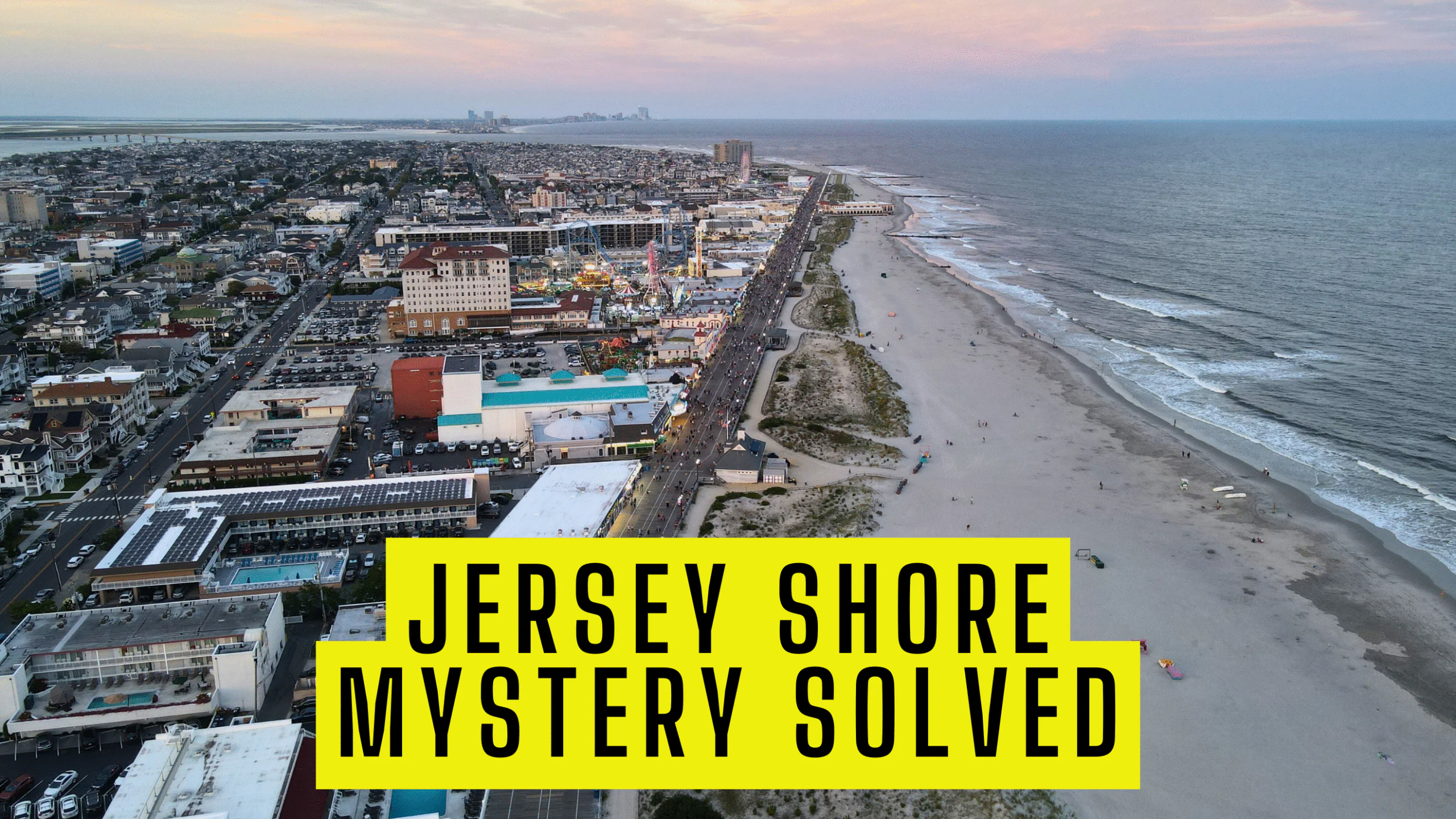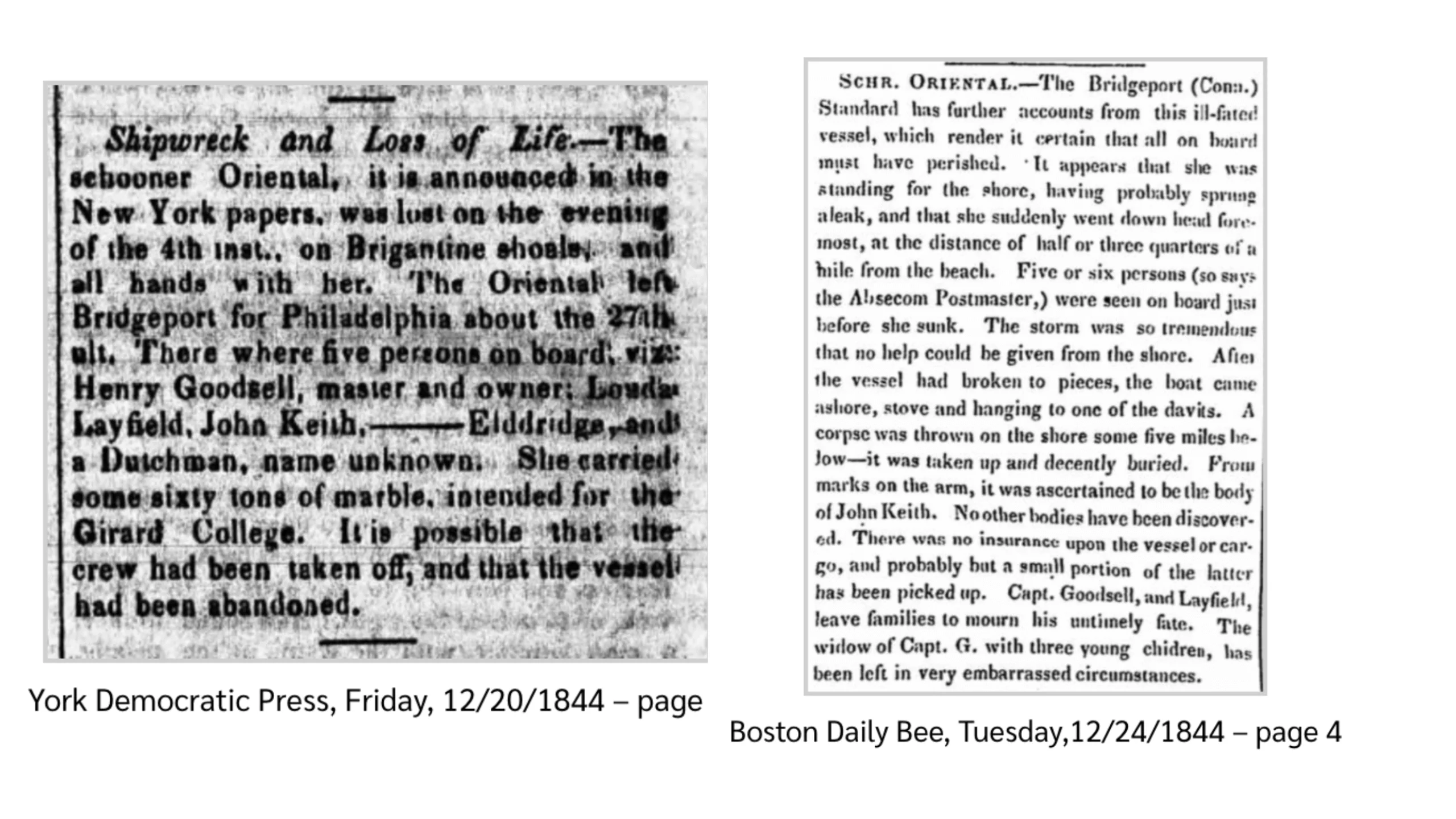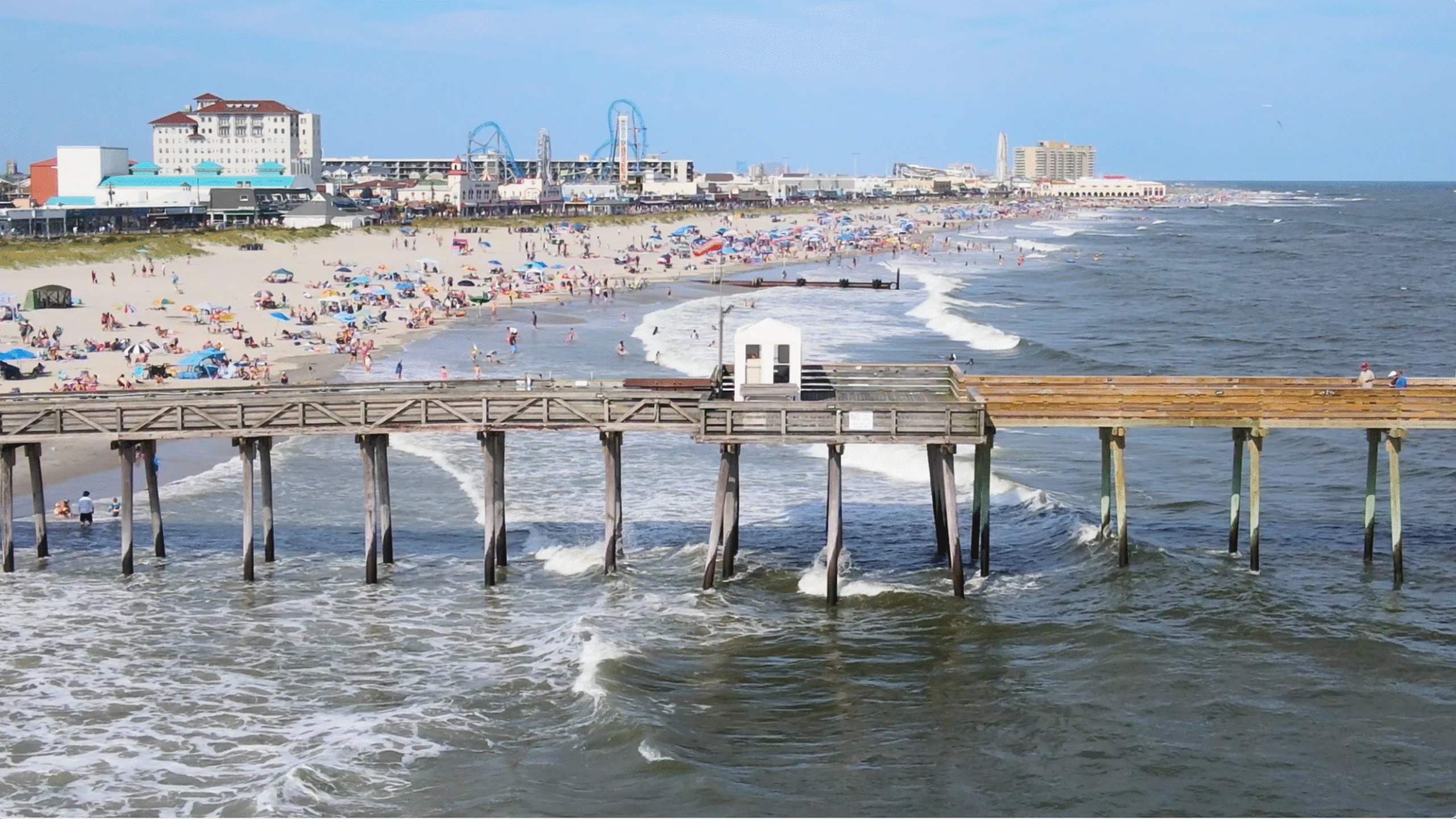SOLVED! Bones Found on South Jersey Beaches Linked to 180-Year-Old Shipwreck
Bones that washed up on South Jersey beaches over the span of nearly two decades have finally been identified–and the discovery unlocks a forgotten piece of local history dating back to 1844.
If you’ve ever walked the sands of Longport, Margate, or Ocean City, you might have unknowingly strolled past the final resting place of a long-lost sea captain.
Let’s rewind.

SOLVED! Bones Found on South Jersey Beaches Linked to 180-Year-Old Shipwreck
In 1995, a human skull was discovered on the beach in Longport, Atlantic County. A few years later in 1999, more skeletal remains were found in Margate. And again, in 2013, additional bones surfaced in Ocean City.
Despite investigations, DNA testing, and public inquiries, the remains–dubbed “Scattered Man John Doe”–remained unidentified for nearly 30 years.
But that changed in late 2023 when the New Jersey State Police teamed up with Ramapo College’s Investigative Genetic Genealogy (IGG) Center to give the case one more try using cutting-edge technology.

Ramapo College students studying investigative genealogy began building out a family tree from the 1600s, identifying possible relatives in Connecticut’s Litchfield and Fairfield counties. As they traced ancestral lines, they also dug into 19th-century shipwrecks off the coast of New Jersey.
Also See: The Haunted Grave on the Cape May Beach
That’s when they stumbled across two newspaper articles dated December 20 and 24, 1844. Both referenced a tragic shipwreck involving a schooner called the Oriental. The ship had left Connecticut bound for Philadelphia carrying 60 tons of marble intended for the construction of Girard College. But it never made it.

By early 2025, students believed they had their man. On March 7, the New Jersey State Police obtained a DNA sample from one of Goodsell’s great-great-grandchildren. A month later, on April 8, 2025, it was official–Scattered Man John Doe was indeed Captain Henry Goodsell.
This makes the case one of the oldest identifications ever solved using investigative genetic genealogy.

Colonel Patrick Callahan of the NJ State Police echoed that sentiment, calling the identification “a powerful reminder of our unwavering commitment to resolving cases no matter how old.”
Although this wasn’t a criminal case, it brought closure to a story lost to time–and uncovered a fascinating chapter in the maritime history of South Jersey.
Cape May County Prosecutor Jeffrey Sutherland summed it up best: “This case demonstrates the power and accuracy of this new technology combined with classic detective work.”

So the next time you’re walking the shoreline in the Wildwoods or nearby towns, take a moment to think about the lives that passed through these waters–some, like Captain Henry Goodsell, who never made it ashore… until now.
There is one mystery here in the Wildwoods that still remains unsolved. Learn about the Vanishing of Jesse Hunt back in 1906 by clicking the link below.
The Vanishing of Jesse Hunt: Wildwood’s 1906 Surfside Mystery
